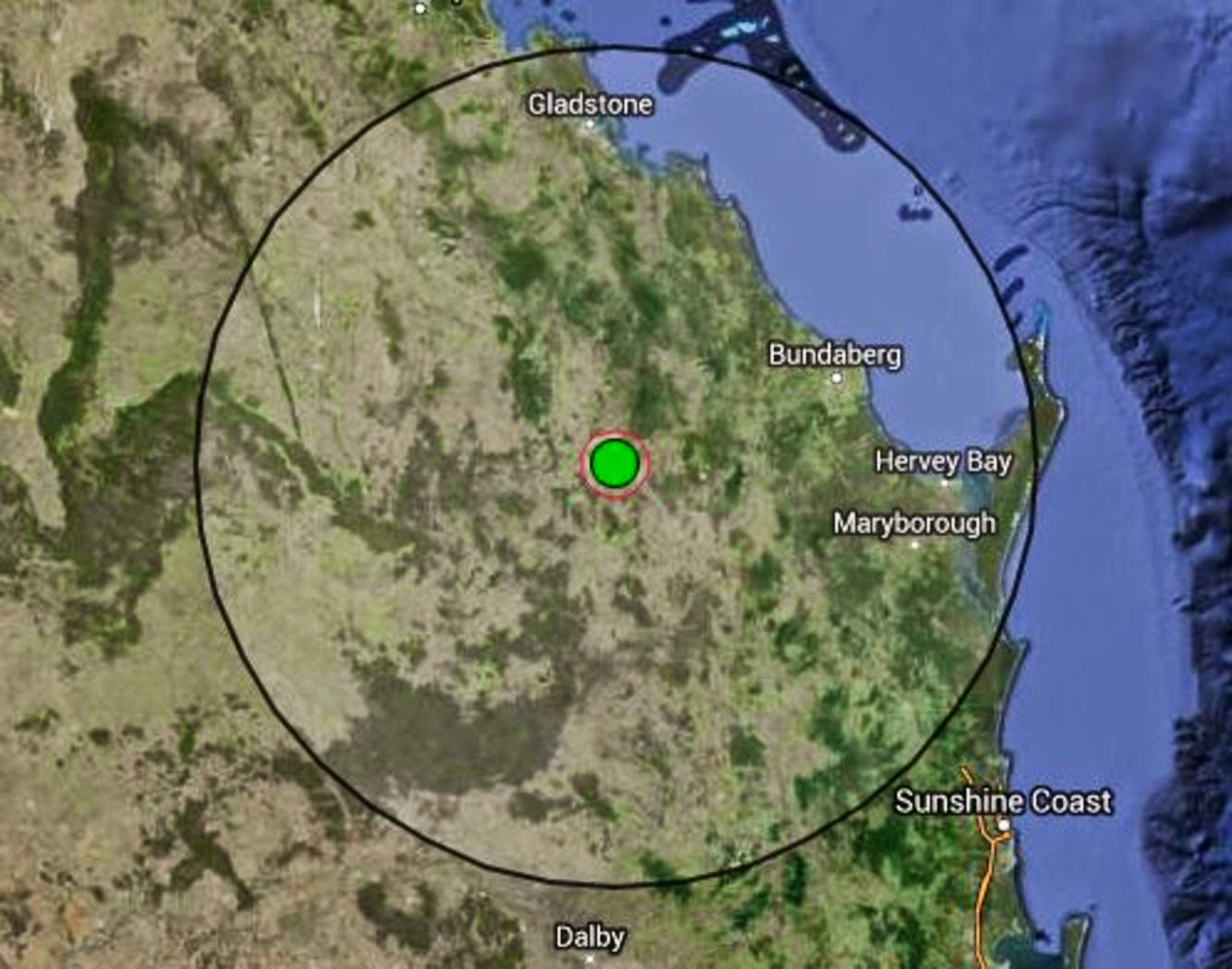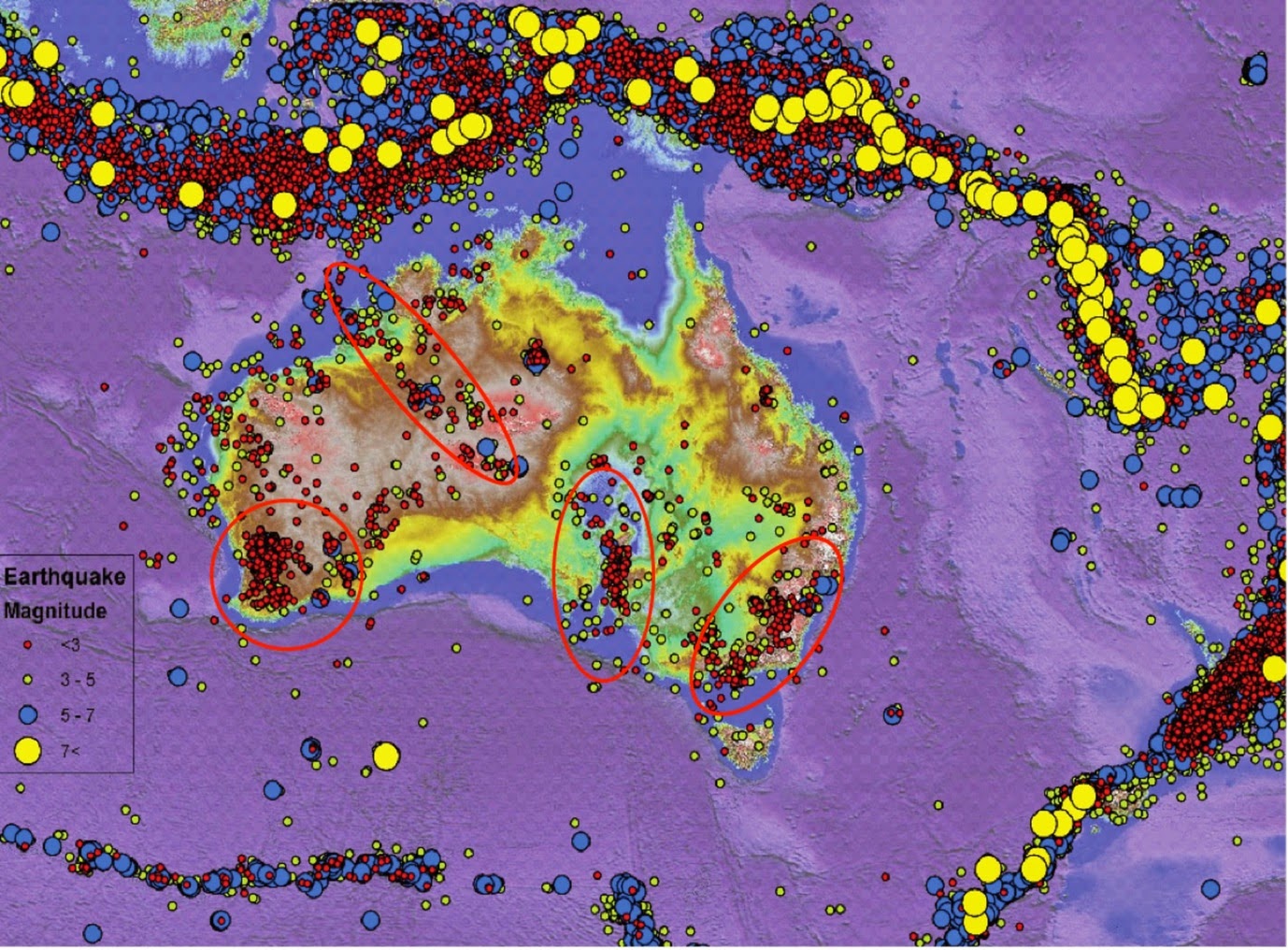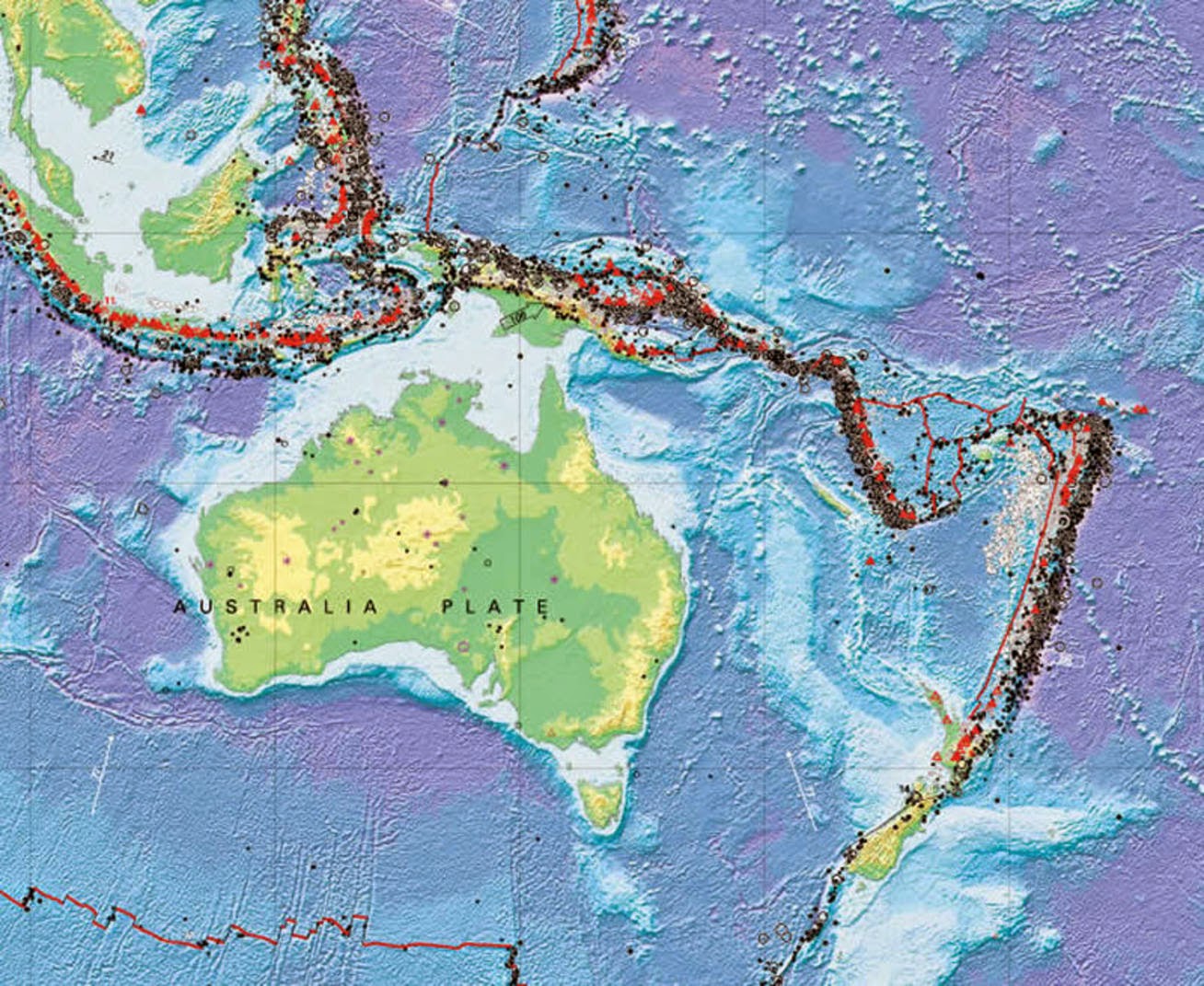
Australia is generally regarded as a flat and seismically inert continent that is safe from any serious earthquake hazard. While this is generally true, we do occasionally experience moderate earthquakes, with a magnitude greater than 5.
This fact was witnessed first hand by the residents in Bundaberg and Brisbane, who at 2am (AEDT) yesterday morning felt a magnitude 5.2 earthquake and several smaller aftershocks.
While this earthquake was thankfully small, the world has witnessed several destructive earthquakes in the recent past. This highlights the fact that natural disasters are indiscriminate to political boundaries, while emergency responses are now globally coordinated.
In 2004, the magnitude 9.2 Great Sumatra earthquake – the second largest in recorded history – resulted in a tsunami that killed over 200,000 people.
In 2011, around 230,000 people died following a magnitude 7.0 earthquake in Haiti.
In the same year, magnitude 9.0 Tōhoku earthquake off the east coast of Japan spawned a tsunami, which resulted in around 19,000 deaths and massive infrastructure damage.
A magnitude 8.8 earthquake in Chile in 2010 was fortunate to account for only 500 lives. However, in 2008, the magnitude 8.0 Sichuan earthquake in China killed as many as 87,000 people, leaving up to five million homeless.
The stark variation in casualties reflect not only the magnitude, location and depth of the earthquake, but the population density and strength of infrastructure foundations.
Many people also don’t realise that the moment magnitude scale, or “Richter scale”, is a logarithmic measure of shaking amplitude. This means a magnitude 5 earthquake has a shaking amplitude ten times that of a magnitude 4. This converts to 32 times more energy released for a one-fold increase in moment magnitude, and approximately a 1,000-fold increase for a difference of 2.
To put this in perspective, the 7.2 event in Meereberrie was 1,000 times more powerful than the 5.2 event experienced in Bundaberg yesterday, while the 9.2 Great Sumatran earthquake was 1 million times more powerful.
Beneath terra Australis

Earthquakes in Australia have also resulted in significant damage and loss of life. This was certainly the case with the magnitude 5.6 Newcastle earthquake in 1989, which killed 13 people and resulted in a $4 billion damage bill.
Adelaide is the most earthquake prone capital in Australia. It experienced a magnitude 5.4 earthquake in 1954 that caused over A$1 billion of damage in today’s money.
The largest earthquake recorded in Australia was a magnitude 7.2 in Meeberrie in 1941, some 500 km away from Perth. Apart from cracking all the walls of the Meeberrie homestead and some minor damage in Perth, there was no significant damage from this event simply due to the lack of any nearby population centre.
The earthquakes in Australia are a particularly mysterious type, referred to as “intra-plate” earthquakes. These occur within the interior of tectonic plates rather than at plate boundaries – such as Japan, Indonesia, New Zealand, Chile and the Himalaya – where most of the worlds earthquakes occur.
Unlike earthquakes at plate boundaries, the mechanisms driving intraplate earthquakes are poorly understood. Plate boundaries are either convergent (colliding), divergent (separating) or transform (sliding past one another), and together these account for about 90% of the worlds seismicity.
The question of what drives intraplate deformation far from the influence of plate boundaries has global significance, as they often occur in regions that are not well prepared for such events.
To understand intraplate deformation we must have accurate data relating to the current orientation of the Australian stress field. This can only be determined by monitoring borehole breakouts or from earthquakes larger than magnitude 5. Until recently there has been very little detailed mapping of neotectonic features in Australia.

Geoscience Australia initiated a trenching program several years ago, which revealed several young fault systems 100 km north of Adelaide. These indicate that the area may well have experienced earthquakes larger than the 1954 earthquake in the not so distant past.
Very little is known about the nature and recurrence intervals of these faults. This is largely due to the fact that the fault traces are usually covered by a thin veneer of soil and sediment that effectively conceals them from view.
New optically stimulated luminescence (OSL) dating techniques applied to the buried sediment that accumulates at the toe of a fault scarp are shedding light on the timing of pre-historic earthquakes and revealing that the Mount Lofty and Flinders ranges in South Australia are quite young geomorphic features and not necessarily the denuded core of an ancient mountain range as once thought.

Hit predictions
Although we will never be able to “predict” when an earthquake will occur with enough precision to practically evacuate cities or towns, the study of ancient earthquakes (paleoseismology) is an essential tool in extending our knowledge of pre-historic (1973) earthquakes in areas where recurrence intervals along major faults may be in the order of tens of thousands of years.
The issue of uncertainty in earthquake predictions was brought to the fore recently when six Italian seismologists were convicted of manslaughter for giving inaccurate advice before an earthquake that struck the town of L’Aquila in April 2009, killing more than 300 people.
Much to the relief of the world’s geological community, they were acquitted in November 2014 after an appeal, but it highlights the importance of communicating complex natural phenomena to the general public.
While the earthquake in Queensland this week thankfully caused little damage, we still need a longer term perspective in terms of earthquake mitigation, and also in terms of determining the fundamental driving mechanisms of intra-plate tectonism.
We need to talk to communities about the risk of earthquake activities, even in apparently stable regions like Australia. This is because even we are not immune to the tectonic forces that are driving our continent northward at the incredible velocity of about 6 cm per year – making Australia the fastest moving continent.
Emergency earthquake responses are also now a globally coordinated activity involving numerous countries and organisations. That means we all have an important role to play.
Note : The above story is based on materials provided by The Conversation
This story is published courtesy of The Conversation (under Creative Commons-Attribution/No derivatives).










